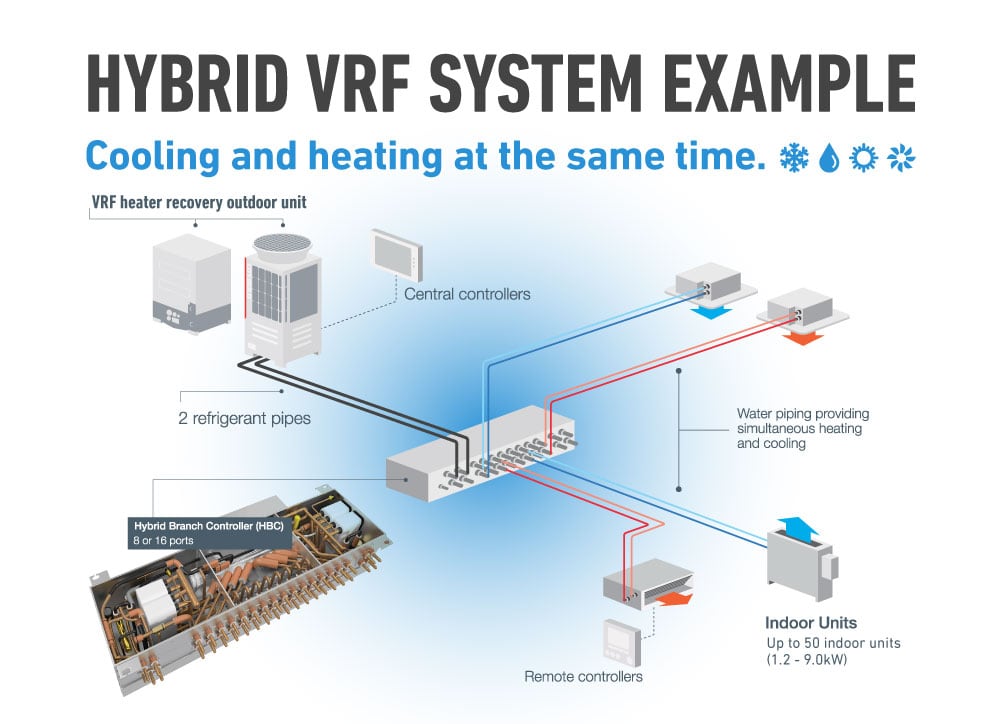VRF Systems
VRF air conditioning systems or VRV Systems are synonymous with the energy-efficient systems for heating and cooling different rooms individually. Variable Refrigerant Volume air conditioning systems are therefore often used in offices and hotels. Manufacturer Daikin developed the concept in 1982 and claimed the name VRV system: Variable Refrigerant Volume. The patent on this name means that other manufacturers use the name VRF system (Variable Refrigerant Flow). The easiest way to explain the VRF air conditioning system is to describe it as a large-scale ductless air conditioning system that can perform at a tremendous volume providing the ability for multiple indoor units or zones to operate from one system.
Perth VRF air conditioning basic operating principle.
The basic principle of the VRV and VRF systems is the same. VRV and VRF systems link one VRV or VRF unit (or multiple outdoor units in cascade) to different fan coils (indoor units). This makes it possible to individually cool and heat the various rooms. Based on the demand in a specific room, a particular (variable) amount of refrigerant is sent to the relevant indoor unit. The electronic expansion valve ensures that the inlet temperature (based on the difference between the current temperature and the desired temperature) is adjusted per individual room.
VRF cooling and heating.
There are various types of systems on the market that make it possible to either cool all rooms at the same time or heat all rooms at the same time (two-pipe system) or to cool room one and heat room 2 (three-pipe system).
